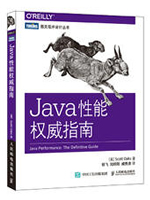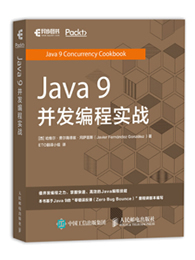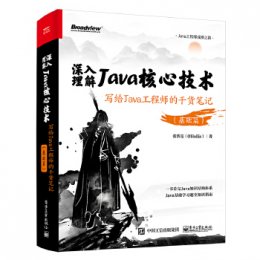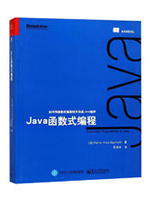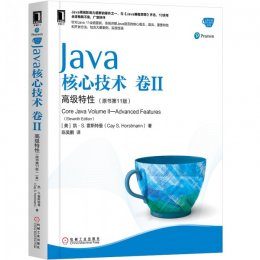本站精选了一篇Java数据结构相关的编程文章,网友卢永贞根据主题投稿了本篇教程内容,涉及到Java、数据结构、链表、栈、队列、树、Java数据结构之链表、栈、队列、树的实现方法示例相关内容,已被410网友关注,相关难点技巧可以阅读下方的电子资料。
Java数据结构之链表、栈、队列、树的实现方法示例
本文实例讲述了Java数据结构之链表、栈、队列、树的实现方法。分享给大家供大家参考,具体如下:
最近无意中翻到一本书,闲来无事写几行代码,实现几种常用的数据结构,以备后查。
一、线性表(链表)
1、节点定义
/**链表节点定义
* @author colonel
*
*/
class Node {
public int data;
Node next=null;
public Node(int data){
this.data=data;
}
}
2、链表操作类
/**链表操作类
* @author colonel
*
*/
public class operateClass {
public Node headNode=null;
/*给链表添加界节点
* @param data 链表节点数据
*/
public Node addNode(int data){
Node newNode=new Node(data);
if (headNode==null) {
headNode=newNode;
newNode.next=null;
return headNode;
}
Node tempNode=headNode;
while (tempNode.next!=null) {
//tempNode=headNode;
tempNode=tempNode.next;
}
tempNode.next=newNode;
return headNode;
}
/**删除节点
* @param 删除节点的位置
*
*/
public boolean delNode(int index){
if (index<1||index>length()) {
return false;
}
if (index==1) {
headNode=headNode.next;
return true;
}
Node preNode=headNode;
Node curNode=preNode.next;
int count=2;
while (curNode!=null) {
if (count==index) {
preNode.next=curNode.next;
return true;
}
preNode=curNode;
curNode=curNode.next;
count++;
}
return true;
}
/**取链表的长度
* @return返回链表的长度
*/
public int length(){
int length=0;
Node temp=headNode;
while (temp!=null) {
length++;
temp=temp.next;
}
return length;
}
/**按照值域对链表数据排序
* @return 返回排序后的链表头节点
*/
public Node orderList(){
Node nextNode=null;
int temp=0;
Node curNode=headNode;
while (curNode.next!=null) {
nextNode=curNode.next;
while (nextNode!=null) {
if (curNode.data>nextNode.data) {
temp=curNode.data;
curNode.data=nextNode.data;
nextNode.data=temp;
}
nextNode=nextNode.next;
}
curNode=curNode.next;
}
return headNode;
}
/**
* 去除链表中值域重复的元素
*/
public void redRepeat(){
if (length()<=1) {
return;
}
Node curNode=headNode;
while (curNode!=null) {
Node insidNode=curNode.next;
Node insidPreNode=insidNode;
while (insidNode!=null) {
if (insidNode.data==curNode.data) {
insidPreNode.next=insidNode.next;
//return;
}
insidPreNode=insidNode;
insidNode=insidNode.next;
}
curNode=curNode.next;
}
}
/**倒序输出链表中所有的数据
* @param hNode 链表头节点
*/
public void reversePrint(Node hNode){
if (hNode!=null) {
reversePrint(hNode.next);
System.out.println(hNode.data);
}
}
/**
* 从头节点开始到为节点结尾打印出值
*/
public void printList(){
Node tmpNode=headNode;
while (tmpNode!=null) {
System.out.println(tmpNode.data);
tmpNode=tmpNode.next;
}
}
}
二、栈
1、该栈使用数组实现,具体的栈操作类
class MyStack<E>{
private Object[] stack;
int top=-1;
public MyStack(){
stack=new Object[10];
}
public boolean isEmpty(){
return top==0;
}
/**弹出栈顶元素(不删除)
* @return
*/
public E peek(){
if (isEmpty()) {
return null;
}
return (E) stack[top];
}
/**出栈站顶元素
* @return 栈顶元素
*/
public E pop(){
E e=peek();
stack[top]=null;
top--;
return e;
}
/**压栈
* @param item 待压元素
* @return 返回待压元素
*/
public E push(E item){
//ensureCapacity(top+1);
stack[++top]=item;
return item;
}
/**栈满扩容
* @param size
*/
public void ensureCapacity(int size){
int len=stack.length;
if (size>len) {
int newLen=10;
stack=Arrays.copyOf(stack, newLen);
}
}
/**返回栈顶元素
* @return
*/
public E getTop(){
if (top==-1) {
return null;
}
return (E) stack[top];
}
}
三、队列
该队列使用链式实现
1、队节点定义
/**
* @author colonel
*队节点定义
* @param <Elem>
*/
class queueNode<Elem>{
queueNode<Elem> nextNode=null;
Elem data;
public queueNode(Elem data){
this.data=data;
}
}
2、队列操作类
/**
* @author colonel
*队列操作类
* @param <Elem>
*/
class MyQueue<Elem>{
private queueNode<Elem> headNode=null;
private queueNode<Elem> tailNode=null;
private queueNode<Elem> lastNode=null;
/**判断该队列是否为空
* @return 返回true or false
*/
public boolean isEmpty(){
return headNode==tailNode;
}
/**入队操作
* @param data 节点元素值
*/
public void put(Elem data){
queueNode<Elem> newNode=new queueNode<Elem>(data);
if (headNode==null&&tailNode==null) {
headNode=tailNode=newNode;
//tailNode=headNode.nextNode;
lastNode=tailNode.nextNode;
return;
}
tailNode.nextNode=newNode;
tailNode=newNode;
lastNode=tailNode.nextNode;
//tailNode=tailNode.nextNode;
}
/**出队操作
* @return 返回出队元素
*/
public Elem pop(){
if (headNode==lastNode) {
return null;
}
queueNode<Elem> tempNode=headNode;
Elem statElem=tempNode.data;
headNode=tempNode.nextNode;
return statElem;
}
/**返回队列长度
* @return 长度
*/
public int size(){
if (isEmpty()) {
return 0;
}
int length=0;
queueNode<Elem> temp=headNode;
while (temp!=null) {
length++;
temp=temp.nextNode;
}
return length;
}
}
四、二叉树
1、节点定义
/**树节点定义
* @author colonel
*
*/
class TreeNode{
public int data;
public TreeNode leftNode;
public TreeNode rightNode;
public TreeNode(int data){
this.data=data;
this.leftNode=null;
this.rightNode=null;
}
}
2、二叉树操作类
/**二叉排序树操作类
* @author colonel
*
*/
class OperateTree{
public TreeNode rootNode;
public OperateTree(){
rootNode=null;
}
/**元素插入二叉排序树
* @param data 待插节点数据
*/
public void insert(int data){
TreeNode newNode=new TreeNode(data);
if (rootNode==null) {
rootNode=newNode;
}else {
TreeNode current=rootNode;
TreeNode parent;
while (true) {
parent=current;
if (data<current.data) {
current=current.leftNode;
if (current==null) {
parent.leftNode=newNode;
return;
}
} else {
current=current.rightNode;
if (current==null) {
parent.rightNode=newNode;
return;
}
}
}
}
}
/**构建二叉排序树
* @param item 元素数组
*/
public void buildTree(int[] item){
for (int i = 0; i < item.length; i++) {
insert(item[i]);
}
}
/**
* 先序遍历二叉树
*/
public void preOrder(TreeNode root){
if (root!=null) {
System.out.println(root.data);
preOrder(root.leftNode);
preOrder(root.rightNode);
}
}
/**中序遍历
* @param root
*/
public void inOrder(TreeNode root){
if (root!=null) {
inOrder(root.leftNode);
System.out.println(root.data);
inOrder(root.rightNode);
}
}
/**后序遍历
* @param root
*/
public void afterOrder(TreeNode root){
if (root!=null) {
afterOrder(root.leftNode);
afterOrder(root.rightNode);
System.out.println(root.data);
}
}
/**
* 层序遍历二叉排序树
*/
public void layerTrave(){
if (this.rootNode==null) {
return;
}
Queue<TreeNode> myQueue=new LinkedList<>();
myQueue.add(rootNode);
while (!myQueue.isEmpty()) {
TreeNode tempNode=myQueue.poll();
System.out.println(tempNode.data);
if (tempNode.leftNode!=null) {
myQueue.add(tempNode.leftNode);
}
if (tempNode.rightNode!=null) {
myQueue.add(tempNode.rightNode);
}
}
}

